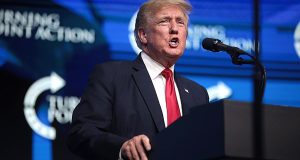Friday, November 22, 2013 marks the 50th anniversary of President John Fitzgerald Kennedy’s assassination. I can fully recall the shock and dismay that reverberated throughout the free world. There is no doubt that this momentous event was a watershed in American history.
The dreams, aspirations and idealism that characterized President Kennedy’s brief tenure in office came crashing down on that fateful day. At age 43, he was the youngest President to occupy the White House. And at this youthful age, he inspired and motivated Americans to have confidence in their abilities. This was indeed the dawning of a new age in American exceptionalism.
John F. Kennedy certainly set the tone of his remarkable presidency on January 20, 1961 when he delivered his never-to-be-forgotten inaugural address. In forceful, unequivocal terms he stated: “My fellow Americans, ask not what your country can do for you; ask what you can do for your country.”
According to President Kennedy, the 35th President of the United States, “the common enemies of man are tyranny, poverty, disease, and war itself.”
Contrary to popular belief, President Kennedy was not an American war hawk. Instead, he worked assiduously for peace. It is worth noting that he firmly resisted the urging of his military commanders who wanted to launch a frontal attack on Cuba in 1962 at the height of the Cuban Missile Crisis. President Kennedy knew that this move could lead to a nuclear confrontation with the Soviet Union.
There is no doubt that President Kennedy demonstrated a great deal of courage, strength and sensible leadership in his handling of this Missile Crisis. By the President’s sheer diplomatic resolve and determination the Soviet Union backed down and ultimately withdrew the missiles from Cuba.
President Kennedy was never afraid to stand up to the Soviet Union. In reply to Nikita Khrushchev’s bully-like tactics in Europe and Cuba, he asserted forcefully: “Let every nation know, whether it wishes us well or ill, that we shall pay any price, bear any burden, meet any hardship, and support any foe to assure the survival and success of liberty.”
In signing the Limited Nuclear Test Ban Treaty in 1963, a treaty that he spearheaded, President Kennedy demonstrated his commitment to peace. He stated: “Today the fear is a little less and the hope a little greater. For the first time we have been able to reach an agreement which can limit the dangers of this nuclear age.”
In President Kennedy’s quest for peace there is no greater demonstration of this noble ideal than his creation of the Peace Corps in 1961. This creation was specifically designed to help uplift Third World countries out of their economic plight. There is no doubt that the Peace Corps volunteers helped to build the basic infrastructure of struggling and impoverished countries.
But President Kennedy’s idealism was not limited to this terrestrial ball. In a speech to Congress on May 25, 1961 he stated quite clearly that it was the objective of the U.S. to land a man on the moon and to return him safely to earth by the end of the 1960s. It was indeed remarkable that this idealistic objective became a reality on July 21, 1969 when Astronauts Neil Armstrong, Michael Collins, and Buzz Aldrin landed on the moon and returned to the earth safely on July 24, 1969.
President Kennedy’s only Achilles heel in public life was his initial lukewarm support for the Black Civil Rights Movement. He was somewhat hesitant and ambiguous in the way he dealt with the issue. Nevertheless, he eventually became an ardent supporter of Civil Rights so much so that in his Civil Rights Address on June 11, 1963 he made it quite clear that Black Americans were “not yet freed from the bonds of injustice” and that “the time had come for the Nation to fulfill its promise of [full freedom].”
It is sad to say that at a time when Americans seemed to have been imbued with idealism and greatness their inspirational leader was suddenly cut down. This vicious act was like a death-knell to the idealistic dreams of millions of Americans and other peoples around the world. It can, therefore, be said that the assassination of President Kennedy on November 22, 1963 definitely marked a watershed in American history.
Rupert can be reached at: r.b.johnson@sympatico.ca.
 Pride News Canada's Leader In African Canadian & Caribbean News, Views & Lifestyle
Pride News Canada's Leader In African Canadian & Caribbean News, Views & Lifestyle





